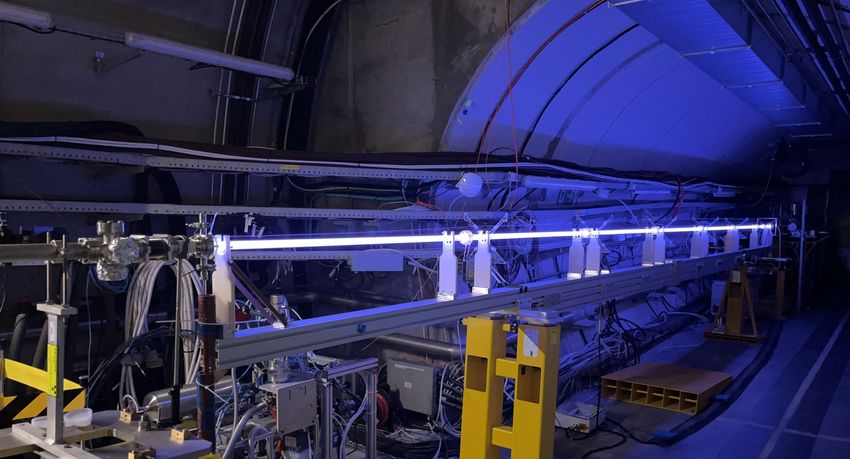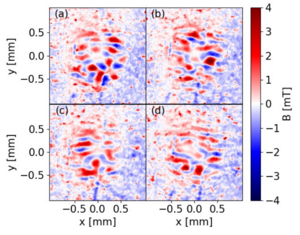Long linear accelerators are required to boost electrons and positrons to high energies. However, radio-frequency technology is limited by the maximum achievable strength of the accelerating electric fields. The aim of AWAKE is to develop a new, more effective acceleration method, i.e. to achieve high energies over short distances. The benefit: less space required and lower costs than for conventional systems.
AWAKE has already passed its acid test: As early as in 2018, scientists have managed to have electrons surf on the plasma wave and have been successfully accelerated. "However, there are still many obstacles to overcome before AWAKE can be used as a powerful acceleration machine," explains Livio Verra from CERN, first author of the study now published in Physical Review E.
How is a plasma wave generated?
In order to create optimal conditions for the formation and propagation of a wave, the researchers must have a precise understanding of the processes in the plasma - for example, self-modulation, an essential step for the formation of the plasma wave: the 10-centimetre-long proton beams from the LHC's SPS accelerator break up into short proton bunches.
"In principle, we can control this process well," explains Patric Muggli, who heads the AWAKE group at the Max Planck Institute for Physics. "However, we have made an interesting observation in various experiments: under certain conditions, the proton beam forms elongated structures inside instead of splitting into individual segments."
The scientists managed to track down the cause. Plasma is an ionized gas, i.e. positive and negative charges are separate from each other. When a proton beam enters the plasma, the protons drag negatively charged plasma electrons with them generating a current of plasma electrons. Filaments are formed when the bunch radius is larger than the so-called plasma skin depth, so that this current flows within the driving bunch, triggering the filamentation instability.
Cause for the formation of filaments
"We call the plasma skin depth the specific distance in the plasma that an electromagnetic field can travel before it decays," explains Livio Verra. "In short: the higher the density of the plasma, the shorter the plasma skin depth, which means that the field can penetrate less deeply into the plasma."


